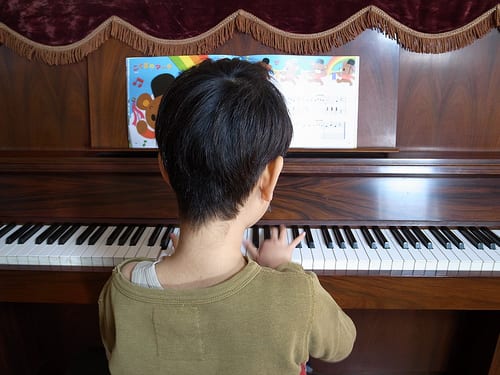 Whether your child is struggling with their piano practice — or you’re an adult learner with small hands — sometimes reaching those octaves and other tough chords may seem impossible. As you continue through your piano lessons, exercises focused on dexterity and flexibility should be a big part of your practicing routine. Here are a few tips to help with playing the piano for small hands:
Whether your child is struggling with their piano practice — or you’re an adult learner with small hands — sometimes reaching those octaves and other tough chords may seem impossible. As you continue through your piano lessons, exercises focused on dexterity and flexibility should be a big part of your practicing routine. Here are a few tips to help with playing the piano for small hands:
1. Break out that metronome.
A metronome is invaluable to your practice, especially when you’re training your fingers. If you’re struggling with a certain passage, set your metronome to a slow tempo and practice several times. When you can play it without any slip-ups, increase the tempo a bit. Continue and repeat.
2. Exercise your fingers and increase strength.
Each of your fingers should be equally strong – otherwise, you may end up with unintended accents! For most pianists, your 4th and 5th fingers are the weakest. To work these fingers, try the Pischna and Hanon exercises, or even simple trills. You can also try slowing down your scales, focusing on each individual note and making sure to keep the volume the same.
3. Face your fears.
As tempting as it is to make the excuse of having small hands, avoiding the tough passages won’t do you any good. When you reach an arpeggio or octave, go back to tip #1: break out that metronome and repeat!
4. Try working on a piano with heavier keys.
If you practice on a keyboard, you’ll no doubt notice the difference when you switch to an actual piano; the keys require a lot more pressure to play. When you can, practice on a real piano, or at least a keyboard with weighted keys. This will naturally strengthen your fingers as you continue to practice.
Photo by tamakisono
Suzy S.
